Tiny Techies: Digital Readiness for Preschoolers
Preschoolers
by LearnX Digital
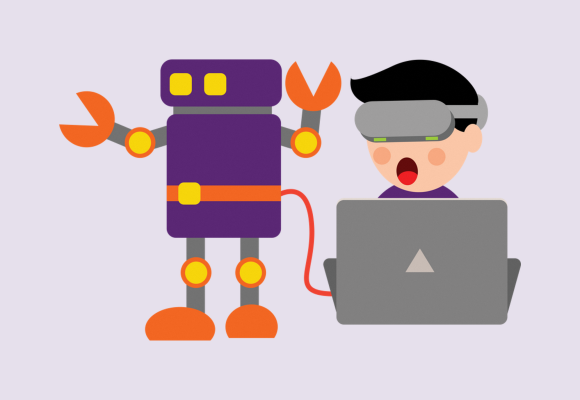
Ignite your child's interest in technology and computational thinking. Packed with interactive activities and playful ideas, our resources make exploring technology a delightful adventure!
Click the drop downs to read on!
-
Augmented Reality
Let’s Learn About Augmented Reality!
Suitable for 4 to 6 years old

Augmented Reality (AR) “augments” your experience of the world around you. Augment means "to add". Virtual objects are added to our environment. AR combines our real world with the virtual world to make our reality better and more interesting!
Activity: Animals Come Alive!
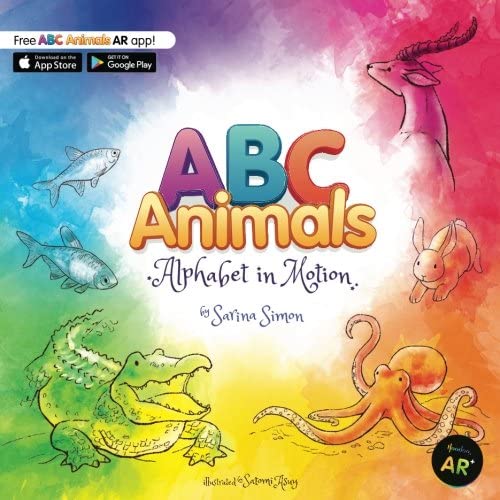
Materials Needed
- "ABC Animals, Alphabet in Motion" book by Sarina Simon (see "Book Recommendations")
- A digital device
- The "ABC Animals AR" app by North South Studios, available free on IOS and Android
How to Play
Use the app alongside the book, and discover adorable animals with your child, while helping them learn the alphabet! Read the book aloud with your child and ask them the questions on the page related to each letter and animal. Then, point your device at the photographs in the book and watch as the still images on the page magically transform into motion videos, revealing the answers to the questions asked.
Parents Pro Tip
Read the books below with your child one time first without using the AR apps. Let them get familiar with the characters and the storyline before introducing the app to them. They might get too distracted with the app by then to focus on the story! This will also allow them to fully appreciate how the added use of AR elevates their reading experience.
Stories Come Alive!

Materials Needed
- Arbi and the Fire Breathing Dragon" by Iker Burguera (see "Book Recommendations")
- A digital device
- The “Arbi Augmented Reality” app by Educa Reality, available free on IOS and Android
How to Play
Read the book with your child while using the app. Not only will you be able to watch the story come alive on your device, but you will also get to answer pop quiz questions too!
Encourage your child to get curious and interact freely with the 3D elements in the book. Play around with the camera angles. Zoom in and zoom out. Fold and rotate the pages. Tilt the book back and forth. The possibilities are endless!
You can even do a fun photoshoot with your child! Take some photos of your child posing with some of the AR animations. Let them express themselves and get creative with the poses!Click to Download: Activity Sheet for Stories Come Alive!
Parent's Pro Tip
Take some time to introduce the app to your child first and walk them through how they can use it. You can be the one using it initially for the first few pages of the book before letting them have a go later once they have observed you do so.
Let's Watch

What is Augmented Reality and How Does it Work? | Mashable Explains (2:21 mins)
A short and entertaining video explaining what Augmented Reality actually is and providing us with real life examples of the use of AR today.
Let's Read

Rainy Weather: A 4D Book
Author: Sally Lee
Publisher:North Mankato, Minnesota: Pebble, a Capstone imprint, 2018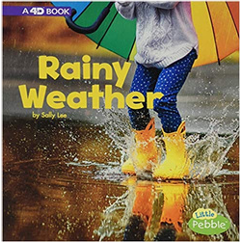
Curious Pearl Tinkers with Simple Machines
Author:Eric Braun
Publisher:North Mankato, Minnesota: Picture Window Books, 2019
ABC Animals: Alphabet in Motion
Author:Sarina Simon
Publisher: Los Angeles, California : NorthSouth Studios LLC, 2016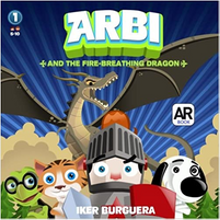
Arbi and the Fire Breathing Dragon
Author:Iker Burguera
Publisher:United States : CreateSpace, 2015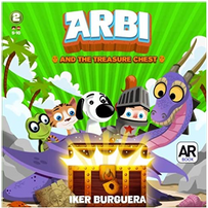
Arbi and the Treasure Chest
Author: Iker Burguera
Publisher: United States: Createspace, 2016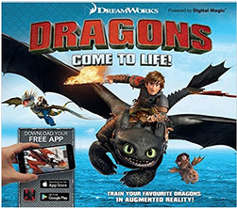
Dragons Come to Life!
Author:Emily Stead
Publisher:London: Carlton Books Limited, 2017All book covers are copyright of the respective publishing companies.
-
Positive Digital Habits
Let’s Learn About Positive Digital Habits!
Suitable for 4 to 6 years old

Help your child develop positive Digital Habits
The American Academy of Pediatrics with support from the Media Literacy Council recommend that parents limit screen time (games, computers, tablets, smartphones and televisions) for preschoolers 2-5 years old to at most 1 hour per day.
Toddlers 1-2 years old should be getting little to no screen time.
Your children should watch high-quality programming - which means it’s got to be educational and interactive!Bonding Activity
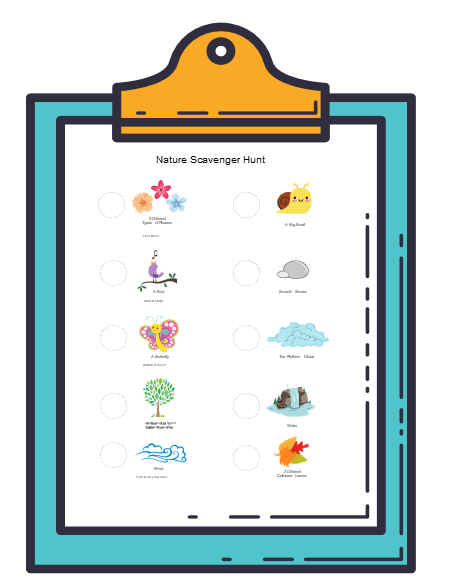
It’s good to get away from technology, and what better way than to have a wonderful sensory scavenger hunt in nature? What treasures can you find?
Instructions
Pack your gear:
- Bring a pencil to tick the treasures you find.
- Remember to bring a water bottle.
- Have fun outside!
Parents, please take pictures of your children while they are out and about.
Reflection
Talk to your child about their scavenger hunt.
- Which item was their favourite to find?
- Which was the most difficult thing to find?
- What senses did they use on their hunt?
Parent's Pro Tip
If you find something interesting that is not on the list, have your child write or draw it on the activity sheet!
Unlock your Phone!

Have your ever taken a look at your hand? At the tips of your fingers are your own unique prints. That means no one else has the same whorls and loops like you do. Our fingerprints also protect the privacy of your parents' phones.
Instructions
- Try tracing a line from the key to the lock through the maze.
- There are a few ways to unlock your phone.
Parent's Pro Tip
Collaborate with your child. Encourage them to tell you how they would solve the activity. If they run into a mistake, don't tell them if they're wrong. Ask if what they're doing is the best way.
Activity: What are we hiding?
Bai the Book wants to read with his friends and family at the playground.
Can you figure out where they are hiding?Instructions
Circle the books you find.
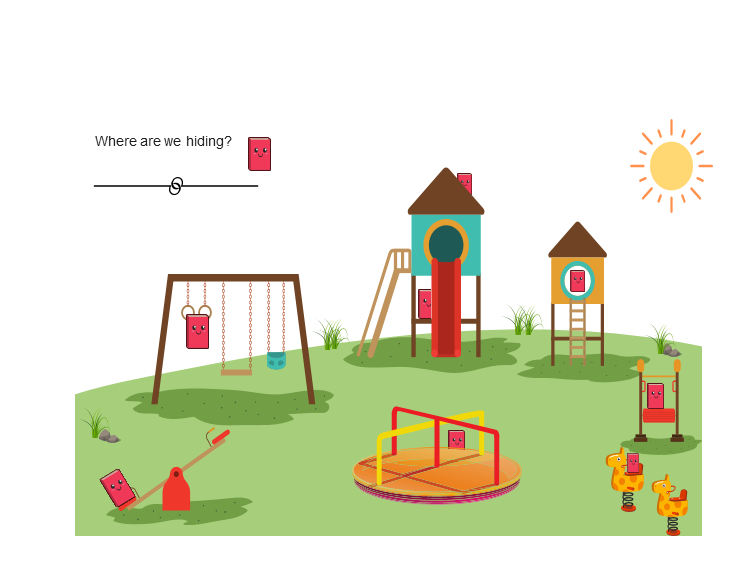

Let's Watch
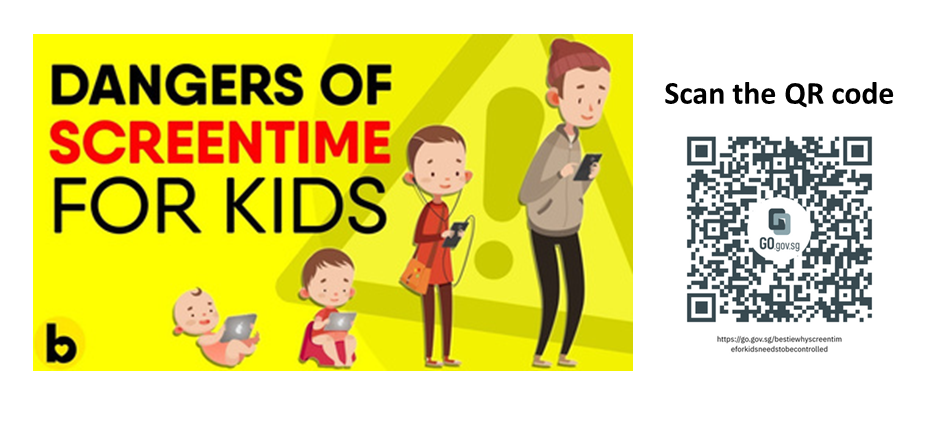
Why Screen Time For Kids Needs To Be Controlled (1:07 mins)
Controlling screen time can be tricky, because screens are everywhere. According to some big health organizations we should probably be paying more attention to the effects screen time can have on kids, especially the little ones under the age of 5.Let's Read

Gabi's Fabulous Functions
By: Caroline Karanja & Ben Whitehouse
Publisher: North Mankato, Minnesota: Picture Window Books, 2018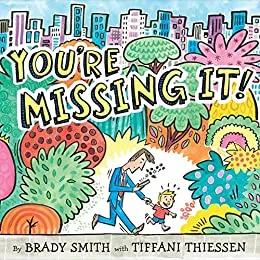
You're Missing It!
By:Brady Smith & Tiffani Thiessen
Publisher: New York, N.Y.: Nancy Paulsen Books, an imprint of Penguin Young Readers Group, 2019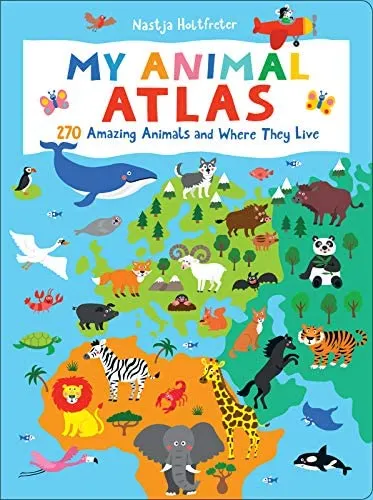
My Animal Atlas: 270 Amazing Animals and Where They Live
Author:Nastja Holtfreter
Publisher:Baltimore, MD: Duo Press, 2021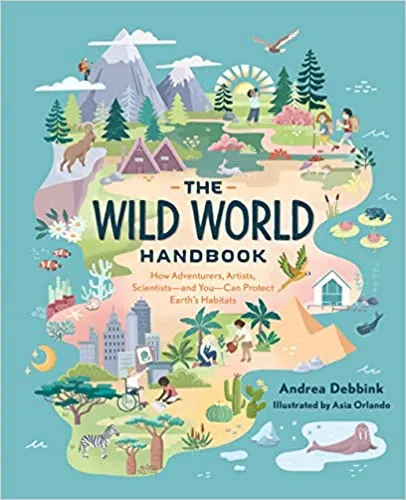
The Wild World Handbook: Habitats
By:Andrea Debbink & Asia Orlando
Publisher: Philadelphia: Quirk Books, 2021
All book covers are copyright of the respective publishing companies. -
Digital Art
Let’s Learn About Digital Art!
Suitable for 4 to 6 years old

What is Digital Art?
These days art isn't limited to paper and colour pencils. Digital Art uses technology like tablets or laptops to create images. You can draw your favourite storybook character or tasty treats. With certain apps, your images can even move!
Colours are so important. They are one of the first ways a toddler learns, understands and describes objects they see. Another method of arranging visual information is through shapes. Letting your child explore different shapes helps with their observational skills too.
Colours Activity

How to Play
Find colourful items and place them in a basket or box. Next, place coloured paper in front of the basket and have your child sort the objects.
Parents' Pro Tip
This wonderful activity helps your child develop skills in making comparisons as well as their organisation. As your child plays, they will classify and sort items based on their similarities.
Poulpe the Octopus’ Birthday Party!

Materials Needed
- Colour Pencils
- Paint
- Crayons
How to Play
Decorate Poulpe and her home in time for her party. Practice your math by figuring out which number corresponds to which colour. Be as creative as you can with the colours. You can even draw objects in the background.
Click to Download: Activity Sheet for Octopus Birthday Party!
Parents’ Pro Tip
The background with no numbers is a chance for your child to draw and colour freely! If your child gets stuck on what to draw or write, have some visual references handy. Use your fingers to count with your child and have them do the same. If they run into a mistake, don't tell them if they're wrong. Encourage them to try again.
Let's Watch

13 Toddler Activities for Learning You Can Do At Home | 1-2 year olds I butfirstcoffeeblog.com (12.33min)
Great and colorful educational crafts and DIYs for toddlers. Learn colors and numbers with these awesome crafts for kids!Let's Read

That's Not My Zebra's Colours
By: Fiona Watt, Rachel Wells & Non Figg
Publisher: London: Usborne, 2018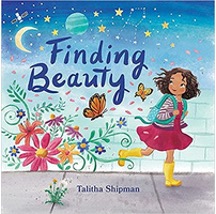
Finding Beauty
By:Talitha Shipman
Publisher: Minneapolis, MN: Beaming Books, 2021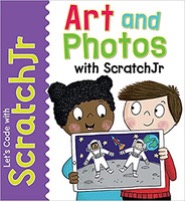
Art and Photos wih ScratchJr
Publisher: New York: PowerKids Press, 2022
All book covers are copyright of the respective publishing companies. -
Amazing AI

Artificial Intelligence, or AI, is like having a smart robot friend that can learn and think like a person. It can help us do many things, like playing games, finding pictures, and answering questions. AI learns by looking at lots of pictures, listening to sounds, or reading words, just like we learn by reading books or listening to your teacher. Below are some examples of how AI already works in our everyday life to make things easier and more fun!
When we watch a video on YouTube or a show on Netflix, they will suggest other videos or shows we might like. AI looks at what we have watched before to guess what you would enjoy next.
Alexa or Siri are two common examples of talking robots in our phone or smart speaker. We can ask them questions like "What's the weather today?" or "Play my favorite song," and they understand us and do what we ask.
Heard of self-driving cars? Some cars are currently being built and tested to drive themselves without a person steering them. AI helps these cars to see the road, avoid obstacles, and follow traffic rules so they can take us places safely.



Rox’s Secret CodeBy: Mara Lecocq
Publisher: Brooklyn, NY: Pow! [2018]
Section: Early Literacy Picture BooksCall No.: English LEC

Super Surprising Trivia About Artificial IntelligenceBy: Lisa M. Bolt Simons
Publisher: North Mankato, Minnesota: Capstone Press, a Capstone imprint, [2024]
Section: Early Literacy Picture Books/Non-FictionCall No.: English 006.3 SIM

Daisy and her AI FriendsBy: AI Singapore and Tan Jia En
Publisher: Singapore: AI Singapore, [2022]
Section: Junior SingaporeCall No.: 006.3 DAI

Artificial IntelligenceBy: Betsy Rathburn
Publisher: Bellwether Media
NLB Overdrive Link: https://nlb.overdrive.com/library/kids/media/5592054
Unplugged AI activities are great for helping young children understand the concepts behind artificial intelligence without needing a computer or internet. By introducing AI concepts before actual coding, children gain a more comprehensive understanding and develop critical thinking skills which are essential for mastering more complex AI and coding topics.
Here are some age-appropriate screen-free acitivities that requires minimal preparation and help introduce AI concepts to preschoolers in an engaging way:
Sorting Games

Sort various objects found around the house such as colourful buttons or cards with pictures of animals based on specific criteria (color, size, type).
This activity simulates how AI algorithms classify data. Young children learn how to group and categorise information, similar to how AI is able to organise data.
Pattern Recognition

Create a sequence of shapes or colors using the children’s toys such as blocks and ask the children to continue the pattern or find what comes next.
AI uses pattern recognition to identify trends and make predictions. This activity helps kids understand how patterns work.
Decision Trees

Make a simple decision tree together with questions and answers to reach a final decision. For example, "Is it raining? Yes/No" leading to "Take an umbrella" or "No need for an umbrella."
Decision trees are a simple form of AI that make decisions based on a series of questions. This activity demonstrates logical decision-making processes.


Introducing AI to young children can be quite challenging as we need to simplify abstract concepts for the younger minds. Here are a few suggestions to create a positive environment that makes learning about AI fun and accessible for young children.
Use simple stories and examples from everyday life to explain AI concepts. For instance, explain how a smart assistant like Siri or Alexa works, or how Netflix or Youtube Kids recommends shows for them to watch based on what they like previously. Relatable stories make abstract concepts more concrete and easier for young children to understand.
Use analogies that children can easily relate to, like comparing an AI's learning process to how they learn new things at school. Simplified terms and familiar analogies make complex ideas more accessible and understandable.
Ask open-ended questions like, "How do you think a robot knows where to go?" Encourage children to ask their own questions about AI. Encouraging curiosity helps children become active learners, promoting deeper understanding and retention of concepts.
Additional Activities using Artificial Intelligence
Using AI during bedtime with children can be a fun and soothing experience by enhancing the bedtime routine with interactive and educational elements. Here are some creative ways to incorporate AI into bedtime:
Personalised Bedtime Stories using AI
AI like ChatGPT can create stories of just about anything and can include child’s name and interests. Use bedtime as an opportunity to test it out by asking your child to share what kind of story they want such as a particular character that they like. Simply input the prompt into ChatGPT to get your story for something new every night.
Bedtime Questions and Answers
For children who are curious and may have a lot of questions before they go to bed, AI can be used to satisfy their curiosity. Put ten minutes aside so that you can your child can ask AI those burning questions to help settle their mind and learn about their world.

What is Artificial Intelligence? | ChatGPT | The Dr Binocs Show | Peekaboo Kidz
In this video, Dr Binocs will explain What is AI?
Artificial Intelligence For Kids
Educational video for children that talks about artificial intelligence. Artificial intelligence allows machines to do things similar to what humans do, such as having a conversation, solving problems, or even drawing!
What is Artificial Intelligence for Kids | What is AI | AI for Kids | AI explained for Kids |AI Kids
In this exciting adventure, we'll be diving into the fascinating world of Artificial Intelligence (AI) and exploring how it's changing our lives in so many cool ways!
WEATHER! | Argo’s World | STEM for Kids
How does Artificial Intelligence (A.I.) predict where hurricanes will strike, clean a room,
charge a car or even play chess? Join Marie and Argo in Cyberspace along with Bob as they learn more about ARTIFICIAL INTELLIGENCE with John McCarthy.